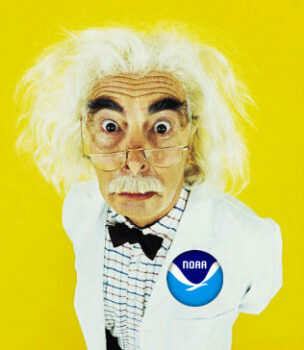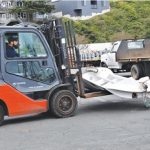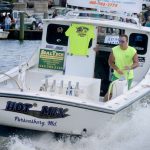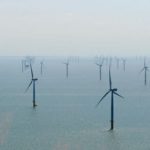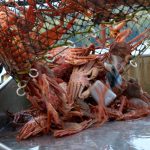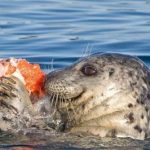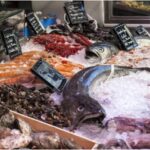Daily Archives: September 27, 2018

N.C. Fishermen brace for a difficult winter financially after the hurricane ruined much of their fall catch.
During a major hurricane, fish migrate away, oysters get contaminated and shrimp are blown to sea, scattered to deeper waters. Though sometimes unnoticed, the seafood industry takes a big hit after storms like Florence. Not only does the crop move, but fishermen often live and work in the coastal communities that take the brunt of the storm’s rage. “We get overlooked real easy. We are isolated to the coast. And unlike the agricultural industry, this affects everyone,” said Glenn Skinner, executive director of the North Carolina Fisheries Association. “Everyone who fishes is affected by this.” Their boats, gear, docks and packing houses take a blow. >click to read<20:33
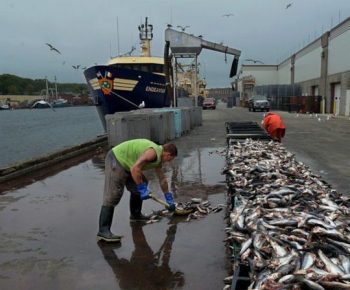
Gloucester: New herring rules prompt angst at dock
The protections for the Northeast herring fishery enacted this week by the New England Fishery Management Council are not welcome news for Cape Seafoods and could force the locally based seafood company to change the way it fishes.,,, One option, O’Neill said, is to change the way the company’s boats fish, moving away from the ultra-efficient midwater trawling to bottom trawling in the areas where the technique is allowed. “Even if we decide to make the investment in new gear, it’s not going to be an easy thing,” O’Neill said. “Everything the council does devalues our operation. It devalues the permits and it devalues the plant. How do you plan anything? How long before they try something else?” >click to read<16:34
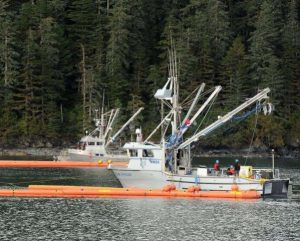
Prince William Sound fishermen test oil spill response skills near Whittier
At first glance, it appeared to be a carefully orchestrated aquatic slow dance, set to the tune of barking sea lions. About 20 small commercial fishing vessels were joined Tuesday by large barges and state-of-the-art tugboats to test new oil spill response equipment on Prince William Sound. Smaller craft towed “current buster” oil booms in tandem with larger fishing boats deploying skimmers that would collect oil from the boom for transfer to a barge tank. It was one in a series of training exercises by Alyeska Pipeline Service Co.’s Fishing Vessel Response Program, which has an annual budget of $8 million. “Without these fishing vessels you don’t have a response plan,” said Jeremy Robida, the spill prevention and response manager for the Prince William Sound Regional Citizens’ Advisory Council. >click to read<15:30

Lobsterman fear bait shortage with herring quota cut
At the height of the season, Brooklin lobsterman David Tarr spends $600 to $800 a day to bait his traps with herring, pogies or redfish. While some Maine lobstermen swear by herring, Tarr is willing to play the field based on price and availability. Unlike most of his peers, Tarr also has the luxury of a personal bait cooler, which allows him to buy bait when the price is right, salt it himself and store up to 200 barrels of it away — $40,000 of bait, enough for a half-season of fishing — for use during tough times. On Wednesday, one day after the New England Fisheries Management Council voted to recommend slashing the yearly herring quota by 80 percent, Tarr figures tough times are coming. “At a certain point, it is just not worth it,” Tarr said. “I won’t go fishing just to pay for my bait.”>click to read<14:03
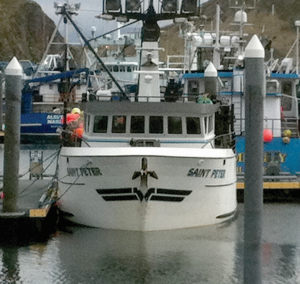
Bering Sea Battle breaks out over growth of ‘Super 8s’ in state cod fishery
The success of the state waters Dutch Harbor Pacific cod fishery in the Bering Sea is scaring both the industrial trawl and longline fleets, and even a local Unalaska fisherman who says a new breed of small boats known as Super 8s are catching way too many fish. In 2014, the new fishery opened with 3 percent of the total Bering Sea cod quota, and two years later it more than doubled to 6.4 percent, by votes of the Alaska Board of Fisheries to promote small boat fisheries. And it may get a lot bigger, as the board will soon hear proposals for growing the fishery to 8, 10 or as much as 20 percent of all the cod available to fishermen in the Bering Sea. >click to read<11:28
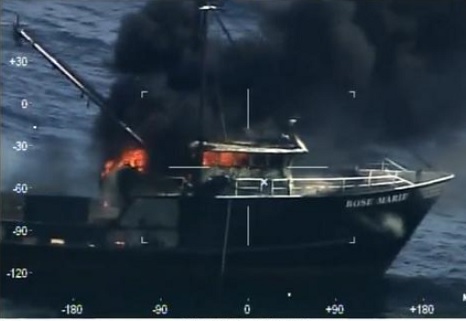
Fisherman Doug Evans is back on dry land after F/V Rose Marie caught fire at sea
Black smoke billowed from the portside of the Fairhaven-based Rose Marie as flames engulfed the steel hull of the 90-foot trawler. Cell phone video captures this from the life raft to which the four-hand crew of the fiery fishing vessel had made their escape. Though he admits it was scary, longtime Provincetown resident and commercial fisherman Doug Evans kept his wits about him. “I’ve been through this before, so I grabbed my keys, my wallet, my phone,” he says, and told his mates to do the same. “And a pair of shoes.” The men were dragging for flounder and lobster 60 to 70 miles east of Chatham on what was supposed to be a six-to-seven-day trip. It ended on Aug. 23, after they’d been out for one night, when the cook saw smoke coming out of a ventilator and went to investigate. >click to read<09:49

Feds say few commercial fishing trips are monitored
Federal officials revealed Wednesday that most of the New England fishing cooperatives that catch cod, haddock, flounder and other groundfish failed to meet the minimum standards for having observers on their boats. National Marine Fisheries Service regional administrator Michael Pentony sent letters to 14 of 19 sectors informing them that they were below the required 15 percent of their trips accompanied by fishery monitors and federal observers. Ten sectors were below 10 percent. Observers count and identify the fish caught and discarded, which helps scientists estimate impacts on fish populations. “We are not trying to point fingers or lay blame,” Pentony told the New England Fishery Management Council at their meeting Wednesday, calling it a systemic problem. >click to read<08:57






